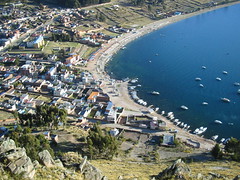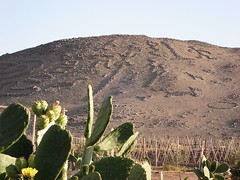In the religion of the Incas, it was believed that the sun god was born here. And with reason. The Isla del Sol is beatifully positioned in the Bolivian side of the Lake Titicaca.
Left the Lake Titicaca and Isla del Sol, in the direction of La Paz, the Tiwanaku unesco site lies in the middle of the andean highlands, surrounded by semi-desertic landscape and dominated by some of the highest and most magnificient andean peaks (Janq’u Uma, Illampu, Huayna Potosi, Illimani). The site is worldwide famous for being the inauguration speeches of Evo Morales, in front of the gateway of the sun and for being a highly spiritual place, representing the vision of a world centered on the tradition and matriarcal social footprint of the indigenous peoples.


